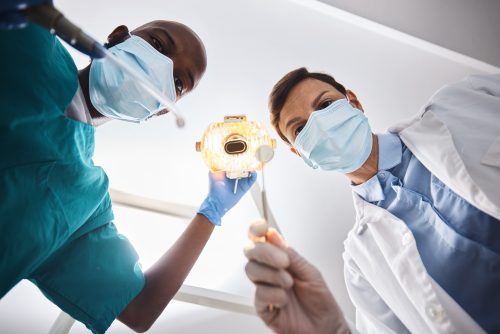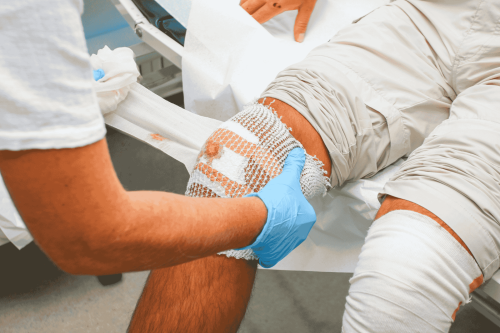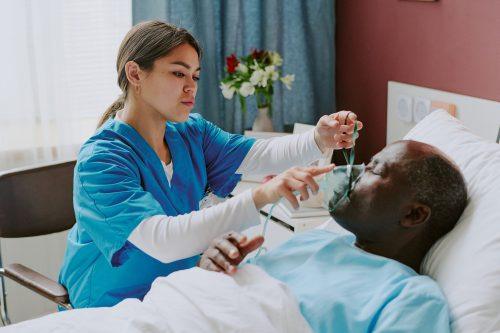Occupational Safety and Health Administration (OSHA) regulations are vital for maintaining a safe and healthy work environment in all industries. This includes dentistry. According to NSC Injury Facts, workplace injuries cost businesses $167 billion in 2021. As dental professionals, it’s crucial to understand and adhere to OSHA dental compliance standards to ensure the well-being of both staff and patients. By doing so, dental healthcare providers can also avoid unwanted costs. In this blog, we’ll explore the importance of OSHA compliance in dentistry. We’ll discuss common OSHA requirements for dental practices and practical tips for creating a safe work environment. Read on.
Importance of OSHA Dental Compliance

Dental offices are fast-paced environments where staff face multiple hazards. These multiple hazards include biological, chemical, ergonomic, and radiological risks. Thus, ensuring OSHA compliance is vital not only to meet regulatory requirements. It is also a must-have for safeguarding the health and safety of both dental professionals and patients. Consequently, adhering to these standards helps prevent workplace injuries. It minimizes the risk of occupational illnesses and ensures regulatory compliance.
Have you recently assessed your dental practice for potential hazards? Are your staff fully trained and up-to-date on OSHA safety protocols? Maintaining a safe and compliant dental office goes beyond simply following regulations. It’s also about cultivating a culture of health and safety that protects everyone in the practice.
Common OSHA Requirements for Dental Compliance
In this guide, we’ll explore the critical OSHA standards every dental practice should implement to ensure compliance, protect health, and foster a culture of safety.
Bloodborne Pathogens Standard
Dental professionals are at risk of exposure to bloodborne pathogens such as HIV, hepatitis B, and hepatitis C during patient treatment. With OSHA mandating Bloodborne Pathogens Standard, infection control protocols will be implemented. These protocols include proper use of personal protective equipment (PPE) and handling of contaminated materials. Therefore, staff training on infection control practices is necessary.
Hazard Communication Standard
Dental offices handle various chemicals and hazardous materials, including disinfectants, sterilants, and dental amalgam. With the Hazard Communication Standard, dental practices are required to maintain safety data sheets (SDS) for all hazardous chemicals. Additionally, employees will need to undergo training on chemical hazards. Lastly, containers should also be labeled with appropriate hazard warnings.
Personal Protective Equipment (PPE)
OSHA regulations mandate the use of PPE to protect dental personnel from occupational hazards. This includes gloves, masks, protective eyewear, and protective clothing. Therefore, dental practices must ensure that staff are trained on the proper use, maintenance, and disposal of PPE. The right PPE usage minimizes the risk of exposure to infectious materials and hazardous substances.
Ergonomics

Dental professionals are susceptible to musculoskeletal disorders. This is due to the repetitive nature of dental procedures and prolonged periods of standing or sitting. Therefore, OSHA encourages dental practices to implement ergonomic measures. The implementation includes adjustable chairs, ergonomic instruments, and proper positioning of equipment to reduce the risk of work-related injuries and promote staff well-being.
Radiation Safety
Dental radiography exposes staff and patients to ionizing radiation, necessitating compliance with OSHA’s Ionizing Radiation Standard. Dental practices must maintain radiation safety protocols and provide radiation safety training for staff operating radiographic equipment. Additionally, they should use protective shielding to minimize radiation exposure.
Have you recently reviewed and updated your infection control protocols to align with OSHA’s Bloodborne Pathogens Standard? What ergonomic measures have you implemented to prevent work-related musculoskeletal disorders? Regularly assessing and enhancing these safety measures is essential to building a workplace culture focused on continuous improvement. This is to ensure the protection of both staff and patients.
Creating a Safe Work Environment
Here are the essential steps for maintaining OSHA compliance, ensuring your practice remains a safe and efficient place for everyone.
Conduct OSHA Training
Ensure that all dental staff receive comprehensive training on OSHA regulations relevant to their roles. Training topics should include infection control, chemical safety, PPE usage, ergonomics, and radiation safety. Regular refresher training sessions should be conducted to reinforce compliance and address any updates to OSHA standards.
Implement Written Policies and Procedures
Develop written policies and procedures outlining OSHA compliance protocols specific to your dental practice. These policies should address infection control practices, chemical handling procedures, PPE requirements, emergency response protocols, and other relevant safety measures.
To maximize the effectiveness of these written policies and procedures, it’s important to make them readily accessible to all staff members. This can be achieved by maintaining a centralized document repository. Have a digital document management system or a physical binder in a prominent area of the dental office. Furthermore, staff members should be trained on the contents of these documents. They can refer to them regularly to ensure compliance with OSHA regulations and promote a culture of safety within the dental practice. Regular review and updates to these policies and procedures are also essential. There are updates in OSHA standards from time to time. Therefore, there will also be updates on industry best practices for the evolving needs of dental practice.
Partner with American Medical Compliance to develop customized dental compliance training courses. From infection control to emergency response protocols, AMC will help you establish written policies and procedures that ensure OSHA compliance and promote a safe work environment.
Conduct Regular Safety Audits and Inspections
Perform routine safety audits and inspections of the dental office to identify potential hazards and ensure compliance with OSHA standards. Inspect equipment, facilities, and work practices to identify areas for improvement. By doing so, you can take corrective actions as needed. Additionally, encourage staff to report safety concerns or near misses promptly.
Regular refresher training sessions are essential for reinforcing OSHA compliance. They also keep staff members informed about any updates or changes to OSHA standards. These sessions provide an opportunity to review key concepts and address any questions or concerns. They ensure that staff members remain vigilant in implementing safety protocols. By prioritizing ongoing education and training, dental practices demonstrate their commitment to creating a safe and healthy work environment for all employees.
Provide Adequate PPE and Safety Equipment
Supply dental staff with appropriate PPE and safety equipment to mitigate workplace hazards effectively. Ensure that PPE is readily available, properly sized, and in good condition. Lastly, provide training on the proper use, maintenance, and disposal of PPE to ensure maximum effectiveness.
Promote a Culture of Safety
Foster a culture of safety within the dental practice by encouraging open communication, collaboration, and accountability among staff members. The importance of safety should be emphasized in all aspects of patient care and practice operations. To encourage staff more, recognize and reward those who demonstrate a commitment to OSHA compliance and workplace safety.
Conclusion

OSHA compliance is paramount for creating a safe work environment in dental practices and protecting the health and well-being of both staff and patients. By understanding and adhering to OSHA regulations, dental professionals can minimize workplace hazards. They can prevent injuries and illnesses, promoting a culture of safety. Implement comprehensive safety protocols, provide ongoing training, and foster a culture of safety. These are essential steps towards achieving OSHA compliance.
With our comprehensive OSHA Training for Dental Healthcare Providers course, you can enhance your team’s safety and compliance. Gain the knowledge and skills needed to ensure a secure environment for both your staff and patients. Don’t leave compliance to chance–invest in your practice’s success today. Get the course here.
Ready to empower your healthcare team with comprehensive compliance education? Partner with American Medical Compliance for tailored, free course development designed for large teams with 100+ employees. Unleash the power of compliance education and ensure your organization stays ahead of regulatory requirements. Contact us today to get started.



